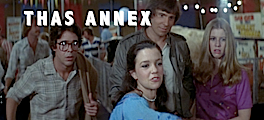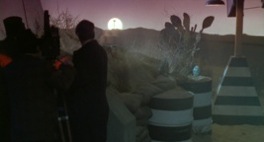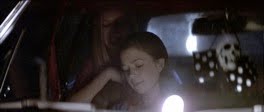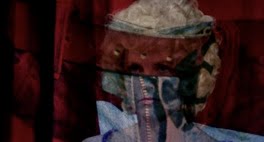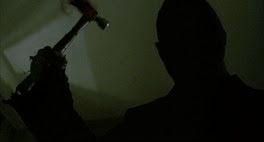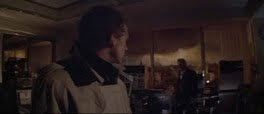Step 1: Watch a Tobe Hooper film at least 2 times, to a point where you can watch the film on mute and still follow the story, and, ideally, what is being established in each scene.I have found this a good tactic in illuminating Hooper's particular cinematic touch. (An alternative to Step 2, for those less warm to the idea of sitting through a Tobe Hooper film on mute, is putting it on in the background while paying it half-attention, with the volume turned low.)
Step 2: Watch the film on mute.
To what extent are story elements expressed visually? How much is mood and tone conveyed through the visual alone? How much of character and dramatic dynamic? Just how active is the camera?
The idea is to be freed from the burden of plot, dialogue, and soundtrack (and musical soundtrack), the former two we can all admit are of vacillating quality in a Hooper film; the latter two being, for one, a major part of one's being mentally preoccupied by a film (which a point of the challenge is to undo), and two, often - more than we realize - a major factor in our (perhaps sometimes overly preponderant?) assessments of "cheesiness" in a film (for instance, in reaction to a bewildering Brad Dourif performance, or a synthesizer-heavy 90s film score).
Divested of the nagging deficiencies presented by a scattershot story and screenplay, or the camp-radar triggering brought about by dated music and questionable performances, or the mood-befouling mental (and time) commitment called for by auditory investment, one is much more free, in better spirit, and of clearer mind to notice how minutely expressive are Hooper's visuals...
... how rhythmic, structural, and lean is Hooper's scene-building...
... how ambitious are these attempts to manifest, through the cinematography, the emotional filigree and dramatic vigor he senses within his stories.
Shots follow shots for reasons...
... They interlock in sequence in a way almost algorithmic, the efficiency of his rendering of space, perspective, and the syncopated beats of actions and interaction seeming uncommonly computational in its artful preciseness.
Furthermore, his camera is an entity unto itself...
... an aesthetic eye, bound by the continuity of dramatic staging and by a never more-than-human, always perspective-informed observational restraint (his beginnings as a documentary filmmaker seem more and more formative with the more thought).
As some filmmakers create great art by emphasizing an inorganic, clinical eye, Hooper and his brand of aestheticism embodies a very organic and emotive camera...
An actor-and-camera ballet exists in his blocking of his players...
Shots are rich with textures and painterly artistic principles...
Pause his films at random and you will see a shot framed to a maximum of elegance.
The Challenge, actually, is the clearest implementation, on Hooper films, of the "Is it art?" test, an examination of which this blog is personally devoted to the extended study.
How does a Hooper film hold up as a painting behind glass?
Is it held tightly to strong, disciplining vision or does a dependence on its inherent existence as a commercial film cause its flab to show: shots of little importance falling by the wayside of the canvas, tone and dynamic left stagnant by not being conveyed visually, the artist's emotional superficiality and aesthetic frivolity betrayed by a similar ambivalence of the observing patron, in the environment of a noisy art gallery and not the escapist movie theater?

































































